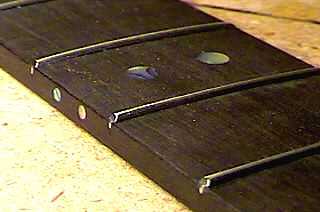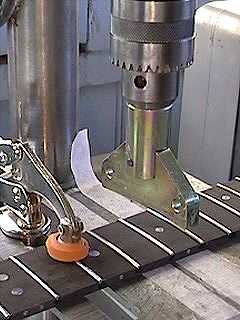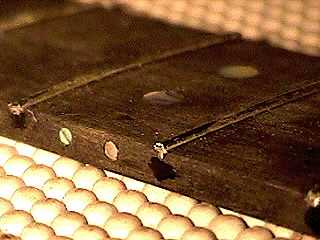|
Before I press the frets in, I have already drilled the holes for the abalone fingerboard position dots and the abalone side dots, glued the dots in with superglue, and sanded them flush.
|
This is a close-up of the fingerboard, after I have inlaid the dots and pressed the frets in. I have not yet filed or beveled the fret ends --- that's why they still look kind of jagged here. The black dabs you see beneath the fret ends are dabs of white glue mixed with a little black acrylic paint, to fill the tiny gaps under the fret ends. Here it is, below, all filed and sanded smooth. The ends of the frets have a slight bevel filed into them.  |
 This is how the
This is how the
